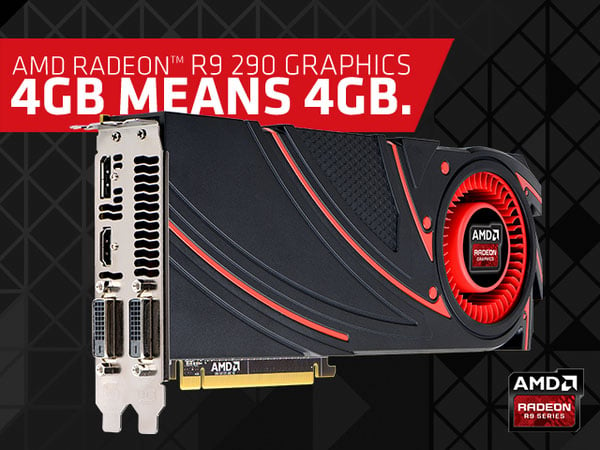AMD Moves To Capitalize On GeForce GTX 970 Memory Bug With Radeon R9 Price Cuts
Considering the fact that AMD's 300 series GPUs are not expected to be unveiled for another couple of months, the company has got to be thanking its lucky stars that an unforeseen GeForce GTX 970 side-effect has come to light.
Unless you've been avoiding the Internet this past week, you're probably aware of the current situation. So, I'll make my recap brief.
When companies like NVIDIA work to fill up their product lines with lots of SKUs, it's common for them to start with their top product of a given segment and whittle it down to fit into a lower price point. This is the case with the GTX 970; it's a scaled-down GTX 980. Often, that process introduces no caveats, but with the GTX 970, things are a little different.

Due to the scaling-down design change, the GTX 970's final 500MB is disjointed from the other 3.5GB. While it's still entirely accessible, it's simply accessed at a (much) decreased speed (about 1/5th). This has led many to dub the card as a 3.5GB+500MB solution, with 196+28GB/s bandwidth (rather than the quoted 224GB/s).
Despite this being the case, NVIDIA remains adamant about the 970's quoted performance. It still pushes fill rate performance of 109 GT/s, and according to the company, the 224GB/s bandwidth remains true, as well.
This is a subject I've spent a lot of time monitoring this past week, and I've reached a couple of conclusions. While it's impossible to ignore the fact that the final 500MB in the framebuffer pushes less bandwidth than the rest, this is an issue that's unlikely to affect many people. If you're running 1080p, you have nothing to concern yourself over. If you run 1440p, you should only be concerned if you run multiple cards - at that point, you'll actually be able to push the kind of detail settings that breaches 3.5GB and still get playable framerates.
Regardless of how big the issue is, though, it sure didn't stop AMD from firing some shots!

It doesn't stop there, either. AMD rarely acknowledges participation in price drops, and this would be no different, but it is most peculiar that during this debacle, both the R9 290 and R9 290X see some price drops.
Admittedly, I haven't seen impressive pricing for the R9 290, but I can't say the same for R9 290X. In some cases, the card has fallen below $300, which is about $30 less than where it's been post-GTX 970 launch.
Based on reference clocks, the R9 290X is a bit faster than the GTX 970 on average, so with the card costing less than a 970, that's quite attractive.
If you're a GTX 970 owner, does the framebuffer's throttled 500MB cause a reason for alarm? As mentioned above, for most people, it won't be an issue. If you're a very high-end gamer, and running multiple GPUs, I'd definitely be a little concerned. If you're a more modest gamer, switching over would mean moving to cards that draw much more power, and run hotter.
While AMD's no doubt gleaming at the goings-on here, I can't help but wish the 300 series was here now, that way people would be choosing between two brand-new architectures, not jumping ship to AMD's 2013 model. Oh well, we can't have it all.

